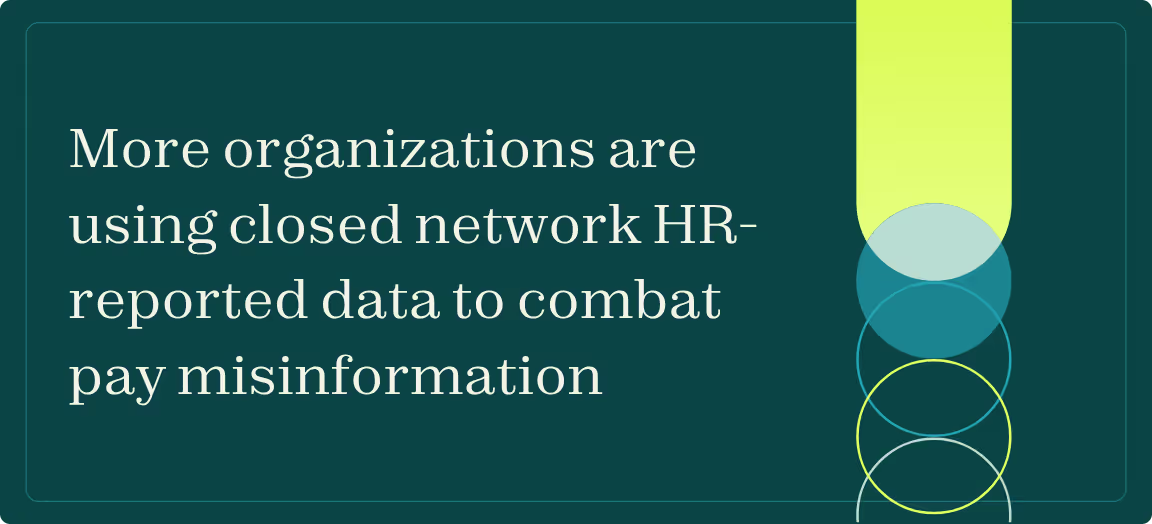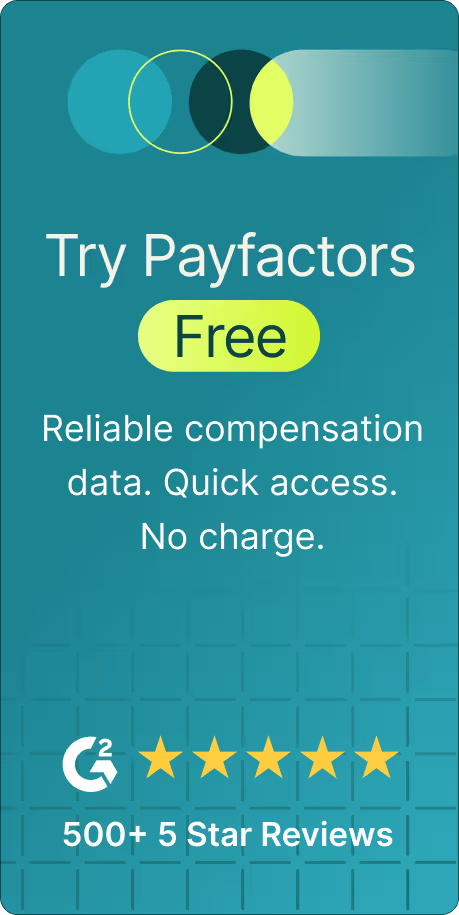Employees have lost trust in employers’ pay decisions, and many companies are in the dark.
Our recent report shows 93 percent of employers believe workers trust their pay practices. Only 61 percent of them actually do.
How can we explain this divide?
Employers don’t recognize their workforce is always job shopping. With an unprecedented amount of online pay data, employees are searching Indeed and LinkedIn for salary ranges. They’re also using generative AI tools such as ChatGPT to assess the market worth of their roles.
While employers typically rely on verified HR-reported market data, employee sources are dubious. Job posting data often reflects aspirational salaries, and AI is prone to providing incorrect answers with alarming confidence.
Pay misinformation is driving a wedge between employers and employees with HR caught in the middle. Comp convos are becoming increasingly fraught, and employees are ready to jump ship.
With nearly half of employers (48 percent) reporting an increase in voluntary turnover last year over “salary-related conflicts,” pay misinformation is inflicting damage.

Seasoned comp professionals are pushing back with facts. They’re doubling down with more dynamic HR-reported data to fight this flood of misinformation. They’re using verified and current salary datasets to reframe pay conversations and restore credibility with their workforce.
What’s the actual price of a job?
Salary data can come from anywhere. While employees scroll job boards, HR practitioners might gut-check salaries in search engines.
The trade-off with online salary data is accuracy. Speed and timeliness can come at the cost of verifiability.
So why use it in the first place?
The answer is clear: traditional HR-reported salary sources such as surveys have data gaps. Maybe the incumbent job you’re looking to match just isn’t available. Maybe the market price for certain hot jobs is moving too quickly to rely on months-old survey data.
More current salary sources solve these pricing problems but can’t come at the expense of validation. The key is finding data that’s both current and credible.
Think about it this way: you’re buying a car. What’s it worth? Well, there’s the Blue Book value, the dealer’s asking price, and the actual price it sells for.
Traditional HR-reported data is your Blue Book value. It’s validated. It’s dependable. But it’s laggy and doesn't reflect the current market.
The price for jobs and cars is similar. Fluctuations in the going rate for specific makes and models change quickly depending on the market. Job pricing swings up and down as the labor market moves in different directions.
Remember the frenzied wage growth with The Great Resignation a few years back? Salary budgets and established pay practices become obsolete seemingly overnight. While the labor market has stabilized somewhat since, comp professionals should brace themselves for the next disruption. Rising tariffs could easily trigger another wage spiral.
This is where current salary data comes in. Instead of benchmarking with dated job pricing, you can glimpse into the market as it exists right now.
However, current salary sources aren’t equally trustworthy. Let’s look at job posting data. Returning to our example, this is the dealer’s asking price. It’s fresh and timely, but also much higher than what you should pay.
When you visit a dealership, you know the sticker price isn’t going to be what you pay. Similarly, with job posting data, the advertised range doesn’t tell you what an organization actually offered.
What HR practitioners need is the actual job price. What was the negotiated offer? How much did the “car” really sell for?
Salary data to counter pay misinformation
Pay misinformation won’t disappear anytime soon and smart comp experts aren’t waiting for ChatGPT to vanish mysteriously. Instead, they’re taking matters into their own hands with datasets that offer direct access to competitors’ actual payrolls.
Others are experimenting with customized AI tools trained on large HR-reported datasets for more precise pay calculations.
While smaller organizations without the wallet to purchase pricey surveys benefit from AI pricing tools and fresher HR-reported datasets, larger companies are using them as well.
Our survey of over 3,500 organizations shows a continuing upward trend of orgs adopting closed-network HR-reported salary sources, many with pricing tools for staying up to date with the market.
The use of closed-network HR-reported datasets grew from 25 percent in 2024 to 27 percent this year. Enterprise orgs are even more likely to use closed-network HR-reported data at 30 percent.

What’s driving this adoption? The benefit of having current, verifiable salary data (whether from other employers’ payrolls or with AI smart pricing tools) extends beyond just having the numbers.
HR practitioners using this data respond faster to market movements and have greater confidence in salary negotiations. They also enjoy higher retention rates and increased employee engagement because they’re better equipped to have tough pay conversations. Fresh HR-reported data is your antidote to pay misinformation that is cropping up in comp convos.
The choice facing comp professionals couldn’t be clearer: do nothing about the spread of pay misinformation from dubious data sources and risk alienating even more of their workforce. Or buck this trend with current salary data that’s actually, well, accurate.
We’re in a period where employees have instant access to salary information from a variety of questionable sources. The organizations that invest in verifiable and current market data won’t just be better positioned to reduce turnover from “salary-related conflicts” and protect their talent franchise. They’ll also gain a lasting advantage in the recruitment of top talent as their business scales.
Want to learn more about the high price organizations are paying due to the spread of salary misinformation? Take a peek at our landmark Pay Confidence Gap Report.

.avif)



.avif)
